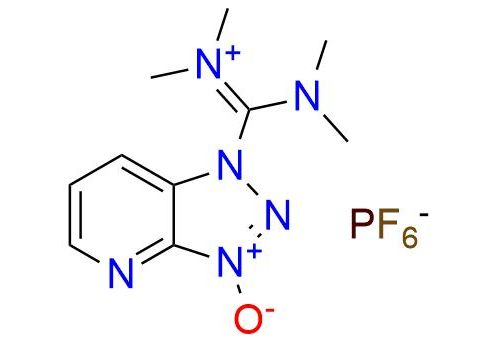CAS 148893-10-1, Cat. No EN300-49821
Reagent for generation of an active ester from a carboxylic acid

HATU (Hexafluorophosphate Azabenzotriazole Tetramethyl Uronium) is a golden-standard reagent in the field of peptide coupling, with the primary purpose of generating an active ester from carboxylic acid. Typically, it is used in DMF with Hünig's base (or TEA) to form an amide bond without heating. HATU is a stable white powder, soluble in the polar aprotic solvents. It performs well in the case of hindered substrates when other coupling reagents fail. This makes HATU an excellent choice when you need a guarantee of a good result on all scales1.
Synonyms: : O-(7-azabenzotriazol-1-yl)-N,N,N′,N′-tetramethyluronium hexafluorophosphate; 1H-1,2,3-triazolo[4,5-b]pyridinium, 1-[bis(dimethylamino)methylene]-, 3-oxide, hexafluorophosphate(1-) (1:1) (ACI); 1H-1,2,3-triazolo[4,5-b]pyridinium, 1-[bis(dimethylamino)methylene]-, hexafluorophosphate(1-), 3-oxide (9CI); 1-[bis(dimethylamino)methylene]-1H-1,2,3-triazolo[4,5-b]pyridinium 3-oxide hexafluorophosphate
Selected publication
-
N-[(Dimethylamino)-1H-1,2,3-Triazolo[4,5-b]Pyridin-1-Ylmethylene]-N-Methylmethanaminium Hexafluorophosphate N-Oxide.
Albericio F.; Kates S. A.; Carpino L. A. Encyclopedia of Reagents for Organic Synthesis 2001. DOI: 10.1002/047084289X.rd312s

